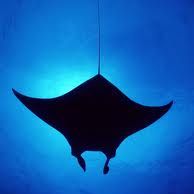Welcome to the plastisphere

From The Economist:
The malign effect of floating plastic debris on seabirds, turtles and other sea creatures is well known. But, as Dr Mincer and Dr Amaral-Zettler have discovered, plastic debris also provides a new habitat for organisms small enough to take advantage of it.
Plastics are energy-rich substances, which is why many of them burn so readily. Any organism that could unlock and use that energy would do well in the Anthropocene. Terrestrial bacteria and fungi which can manage this trick are already familiar to experts in the field. Dr Mincer and Dr Amaral-Zettler found evidence of them on their marine plastic, too.
They noticed many of their pieces of debris sported surface pits around two microns across. Such pits are about the size of a bacterial cell. Closer examination showed that some of these pits did, indeed, contain bacteria, and that in several cases these bacteria were dividing and thus, by the perverse arithmetic of biological terminology, multiplying. Though the two researchers have not yet proved the bugs in the pits are actually eating the plastic, that hypothesis seems a good bet. And if they are, it suggests plastic pollution in the ocean may not hang around as long as has often been feared.
Interesting. Hopefully those bacteria can make a dent in the Great Pacific garbage patch.
